Prague, the capital city of the Czech Republic, is often described as a fairy-tale city, thanks to its stunning architecture, rich history, and vibrant cultural scene. From the majestic Prague Castle perched atop the city to the historic Charles Bridge arching over the Vltava River, Prague offers a blend of history, art, and architecture. This guide takes you through Prague’se must-visit sites and hidden gems, providing insights into each destination with professional, concise, and informative descriptions. Whether wandering through the Old Town Square, marveling at the Astronomical Clock, or enjoying the panoramic views from Petřín Hill, Prague promises an unforgettable journey through its cobblestone streets and picturesque landscapes.
A Potted History of Prague
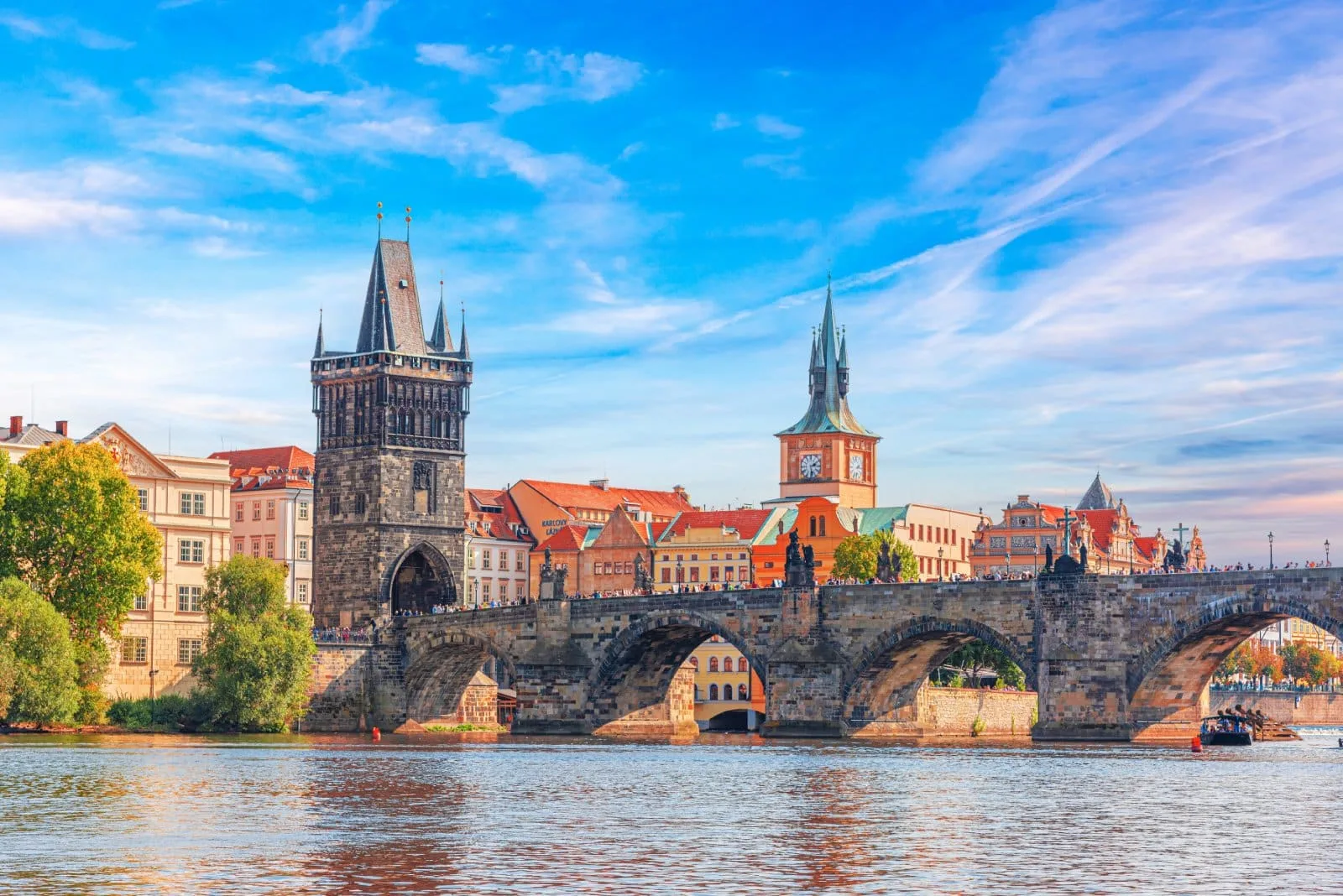
Image Credit: Shutterstock / Den Rozhnovsky
Prague, the capital city of the Czech Republic, boasts a rich and tumultuous history that spans over a millennium. Known as “the City of a Hundred Spires,” Prague’s architectural beauty, cultural depth, and historical significance make it a jewel in the heart of Europe. Its history highlights triumph, tragedy, and resilience, reflecting the broader narratives of European history.
Prague’s history began in the late 9th century when the Premyslid dynasty established a castle, the founding royal house of the Czech lands. The city grew around Prague Castle and became an important trading center in Central Europe during the medieval period. The construction of the Charles Bridge in the 14th century, under the auspices of Holy Roman Emperor Charles IV, marked a golden age for Prague. Charles IV also founded the Charles University in 1348, the first university in Central Europe, cementing Prague’s status as a cultural and intellectual hub.
The early 15th century was marked by the Hussite Wars, a series of revolutionary religious conflicts triggered by the execution of reformer Jan Hus. Despite facing crusades launched by the Catholic Church, the Hussites successfully defended their reforms until the eventual compromise with the Catholic Church.
In 1526, the Habsburg dynasty took control of the Bohemian throne, beginning centuries of Habsburg rule. This period saw the Counter-Reformation and the Thirty Years’ War, culminating in the Battle of White Mountain in 1620, where Protestant forces were defeated, leading to increased Habsburg consolidation and repression.
The 18th and 19th centuries were characterized by the Czech National Revival, a movement aiming to revive Czech culture, language, and national identity. This period laid the groundwork for the modern Czech nation.
Following the collapse of the Austro-Hungarian Empire in World War I, Czechoslovakia was established in 1918, with Prague as its capital. This period of independence was marked by democratic governance and cultural flourishing.
However, this independence was short-lived. Prague suffered under Nazi occupation during World War II, followed by a Communist coup in 1948, leading to over four decades of Soviet influence and authoritarian rule. The city was a focal point of resistance, notably during the Prague Spring of 1968, a period of political liberalization crushed by Warsaw Pact troops.
The fall of Communism in 1989, through the peaceful Velvet Revolution, led by figures such as Václav Havel, marked a new era for Prague and the Czech Republic. The country split peacefully into the Czech Republic and Slovakia in 1993, with Prague remaining the Czech capital.
Prague is a vibrant, modern city that cherishes its rich history and cultural heritage. It is a popular tourist destination, a center for arts and academics. The city’s architecture, from Gothic and Baroque to Art Nouveau and Cubist, tells the story of its past, making Prague a living history book and a fascinating city to explore.
1. Prague Castle
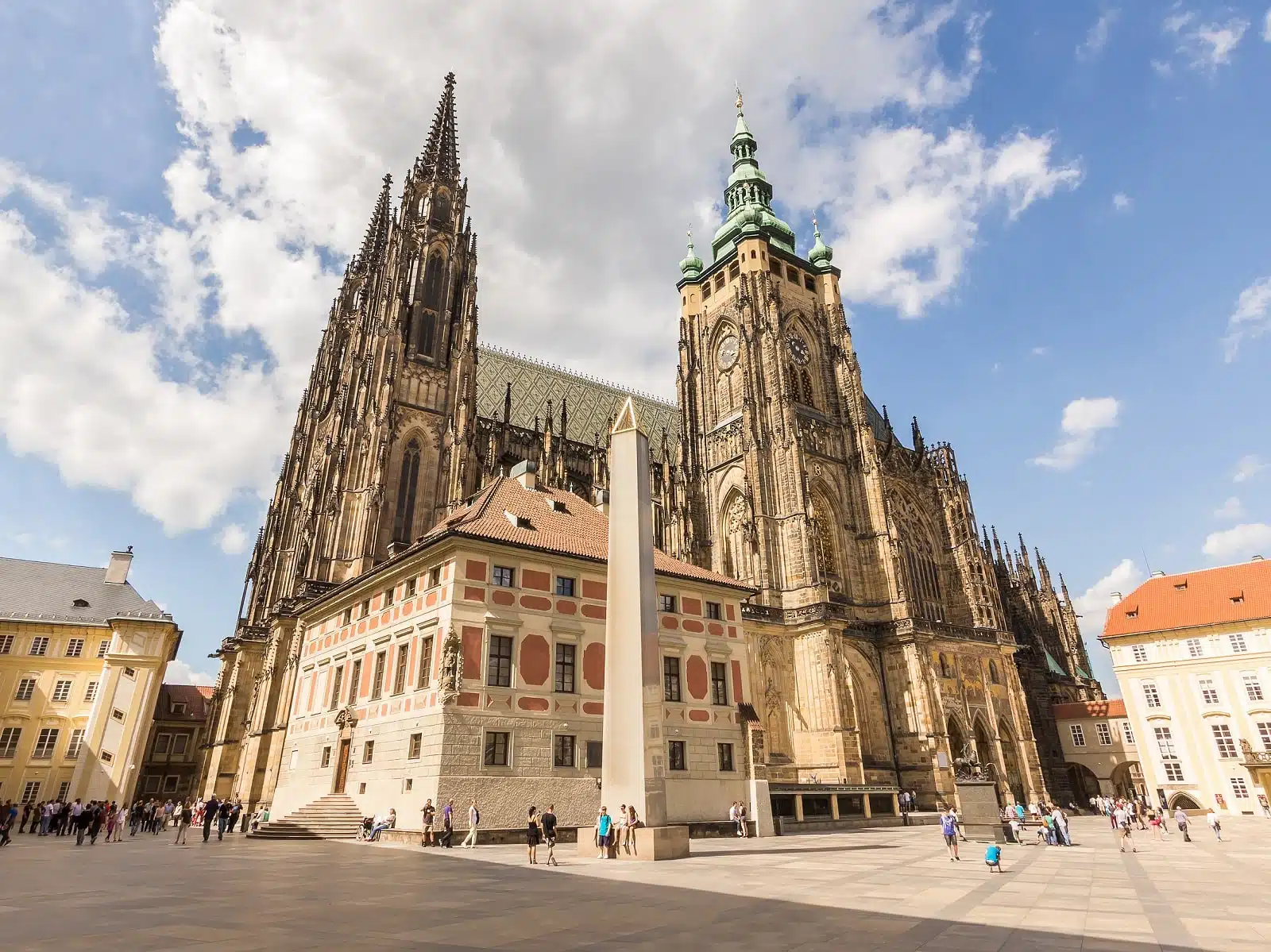
Image Credit: Shutterstock / gnoparus
Prague Castle is the soul of Czech history, art, and architecture. Established in the 9th century, it has evolved into the world’s largest ancient castle complex, embodying the nation’s enduring spirit and cultural heritage. As you wander through its vast courtyards, the Gothic spires of St. Vitus Cathedral reach towards the sky, housing the tombs of patron saints, sovereigns, and archbishops. The Old Royal Palace tells tales of Bohemian kings, while St. George’s Basilica, one of the oldest surviving churches within the castle grounds, showcases Romanesque architecture. Not to be missed, the Golden Lane, with its colorful facades, offers a glimpse into the lives of castle guards, goldsmiths, and alchemists who once lived there. This architectural feat dominates the city’s skyline and serves as the seat of the President of the Czech Republic, continuing its legacy as the heart of Czech political life.
Insider’s Tip: Purchase the Prague Castle Circuit ticket to gain access to most of the significant sites within the complex. Visiting early in the morning or late in the afternoon can help avoid the crowds, offering a more serene experience of the castle’s grandeur.
2. Charles Bridge
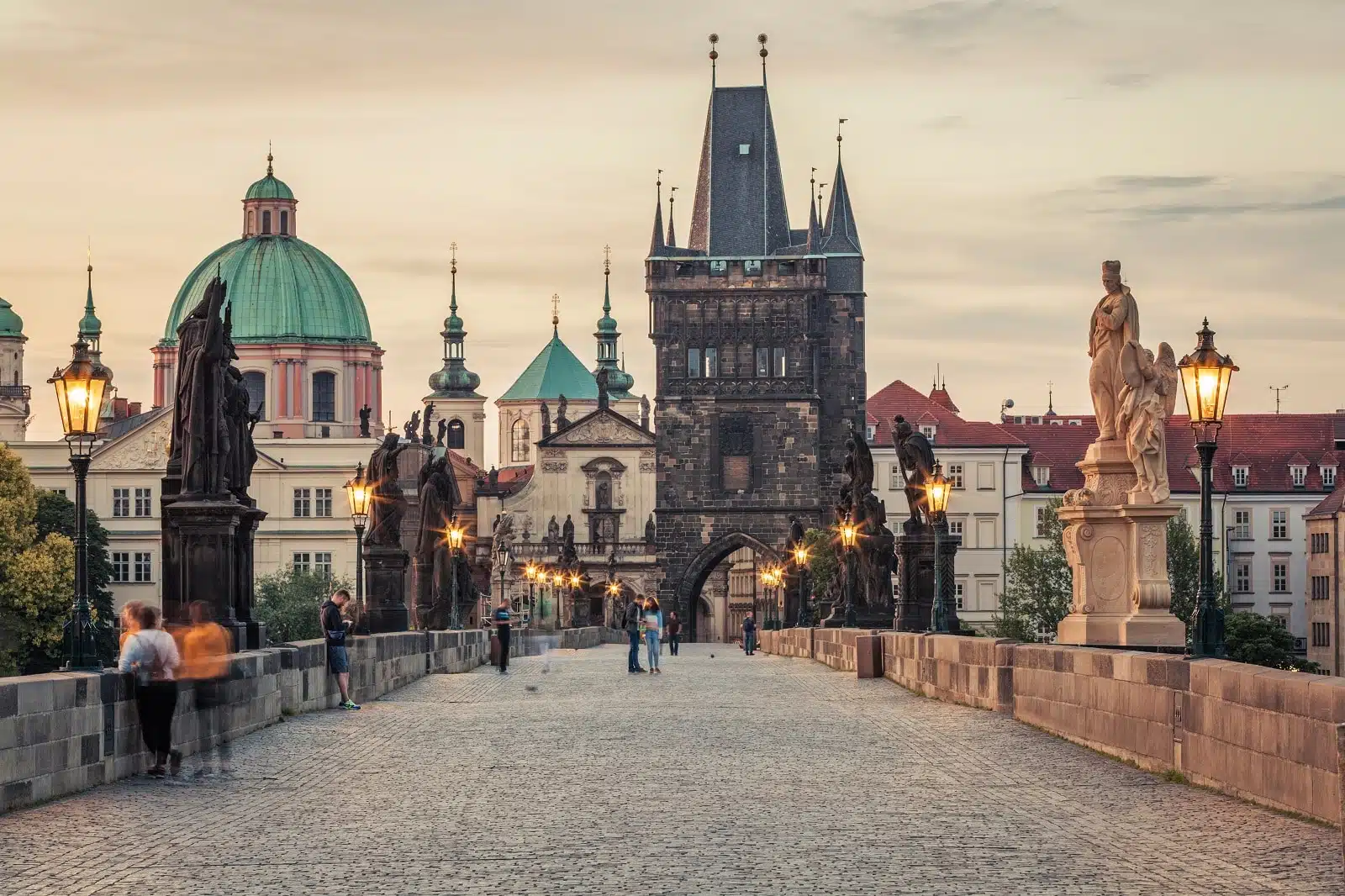
Image Credit: Shutterstock / Radoslaw Maciejewski
Charles Bridge is a historic masterpiece that has witnessed to Prague’s turbulent history since its construction in the 14th century. Commissioned by King Charles IV, this stone bridge adorned with 30 statues and statuaries, most of them baroque-style, connects the Old Town with Lesser Town (Malá Strana). As you stroll across, the bridge offers unparalleled views of the Prague Castle and the Vltava River, especially enchanting at dawn or dusk. The bridge has survived floods and wars, symbolizing the city’s resilience. It’s a place where past and present meet, with artists, musicians, and craftsmen lining its breadth, contributing to the vibrant atmosphere that captivates both locals and visitors alike.
Insider’s Tip: For a memorable experience, visit Charles Bridge at dawn before the crowds arrive. The quiet of the early morning offers a peaceful ambiance, and the soft light is perfect for photography.
3. Old Town Square and the Astronomical Clock
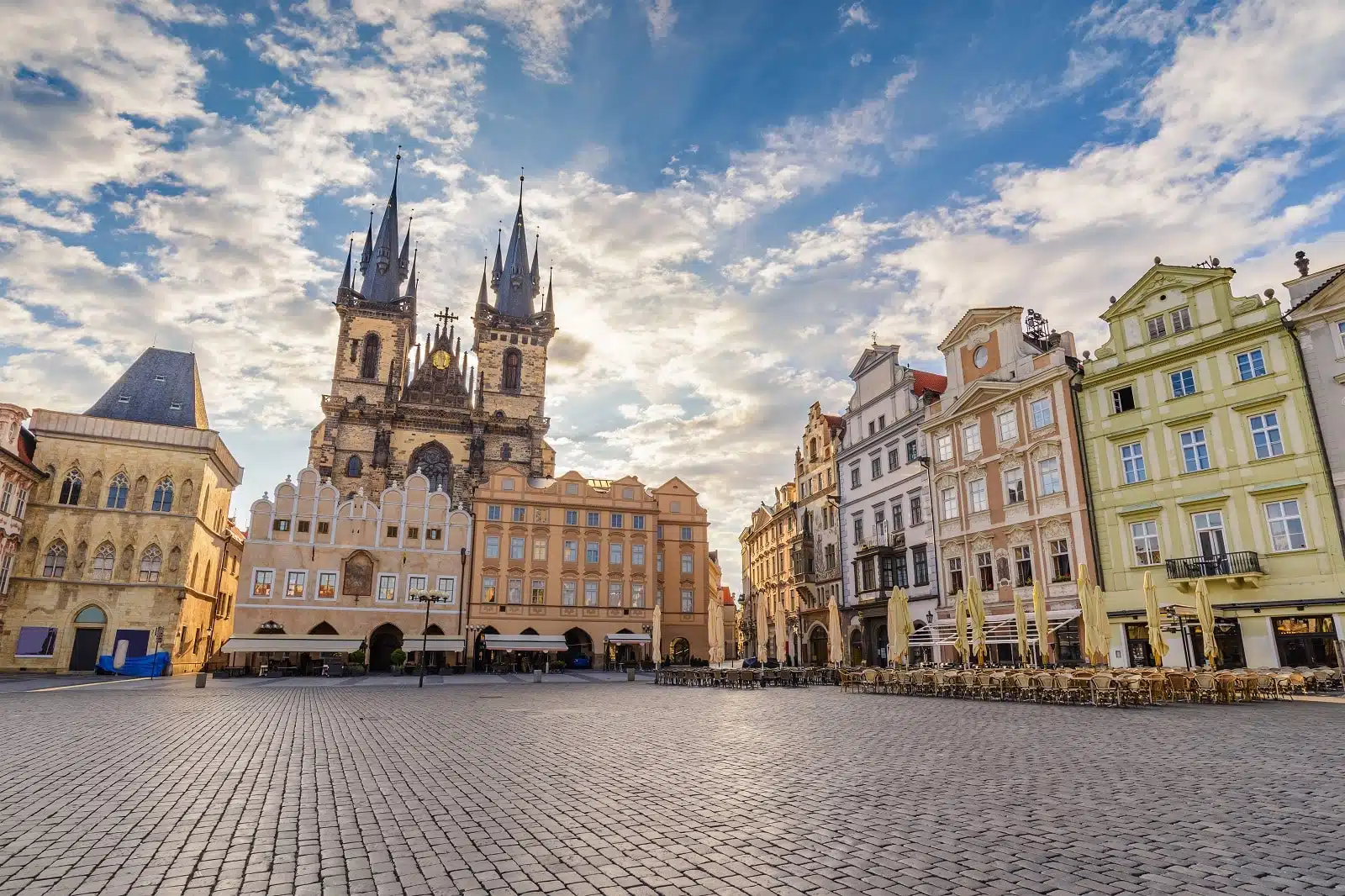
Image Credit: Shutterstock / Noppasin Wongchum
The Old Town Square, the historic heart of Prague, is a vibrant blend of architectural styles, from Gothic to Baroque and Renaissance. Dominating the square is the medieval Astronomical Clock, an engineering phenomenon from the 15th century. This ornate timepiece, mounted on the Old Town Hall’s tower, presents a captivating spectacle every hour as the Twelve Apostles parade in procession, drawing crowds in awe. Surrounding the square, landmarks like the Church of Our Lady before Týn and the Jan Hus Monument emphasizes Prague’s rich religious and cultural history. The square’s lively atmosphere is amplified by the myriad of cafés, shops, and street performers, making it a focal point for social and historical gatherings.
Insider’s Tip: Climb the Old Town Hall Tower for a panoramic view of the square and beyond. The vantage point offers a unique perspective on the layout of the historic city and is perfect for photography enthusiasts.
4. The Lennon Wall
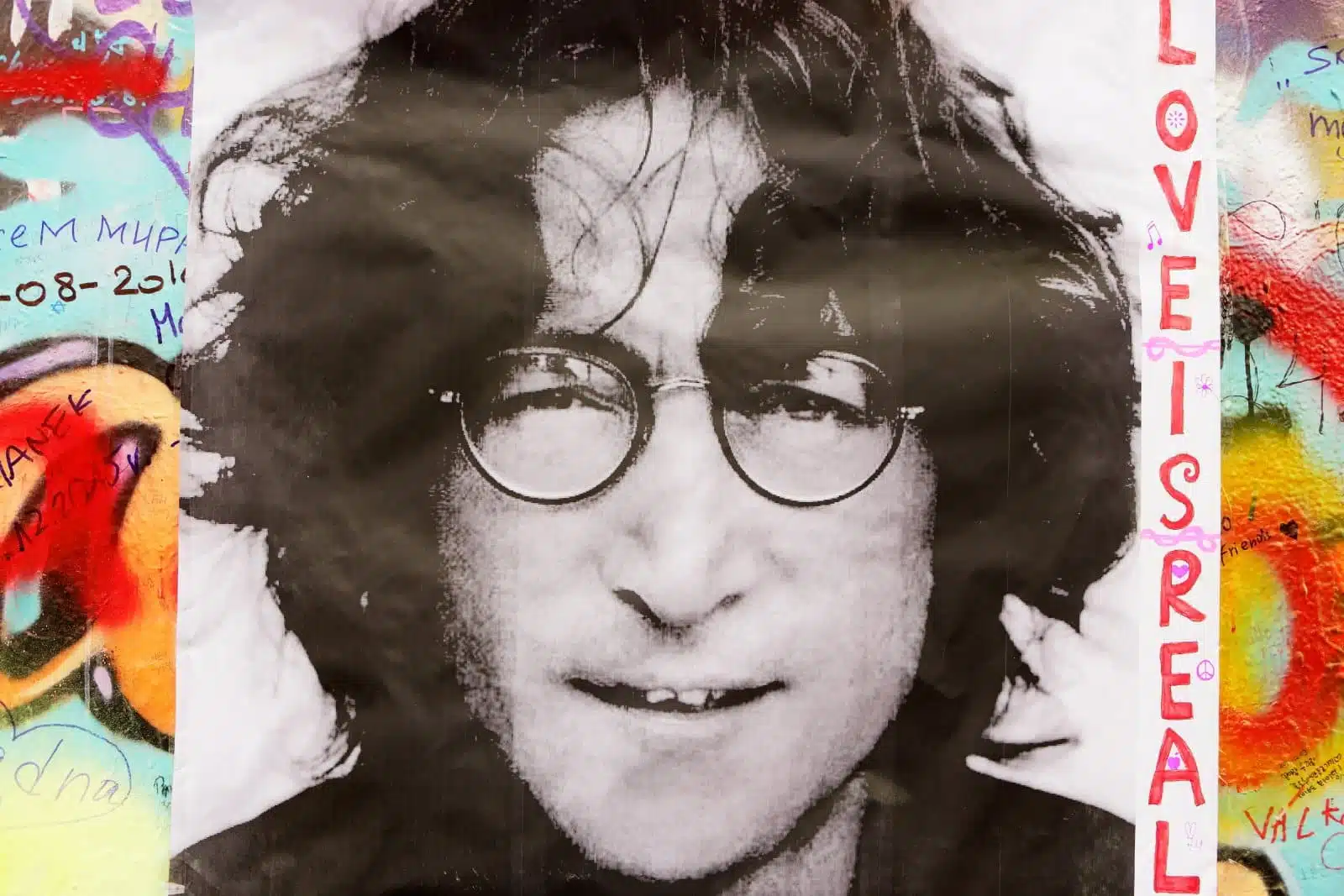
Image Credit: Shutterstock / emka74
The Lennon Wall, once a regular wall turned into a symbol of peace and free speech, stands as a colorful memorial to John Lennon’s influence and the ideals of love and freedom. Following his assassination in 1980, the wall became a canvas for messages of hope and lyrics from Beatles’ songs, evolving into a dynamic piece of public art. It represents the voice of a generation yearning for freedom during the communist era and continues to inspire visitors from around the globe. Each contribution to the wall, whether a painted portrait, a lyric, or a message of peace, adds to the ongoing narrative of this unique cultural landmark.
Insider’s Tip: Bring a marker to leave your own message or piece of art on the wall. It’s a way to become part of the wall’s ongoing history and connect with visitors from around the world.
5. Petřín Hill and Lookout Tower
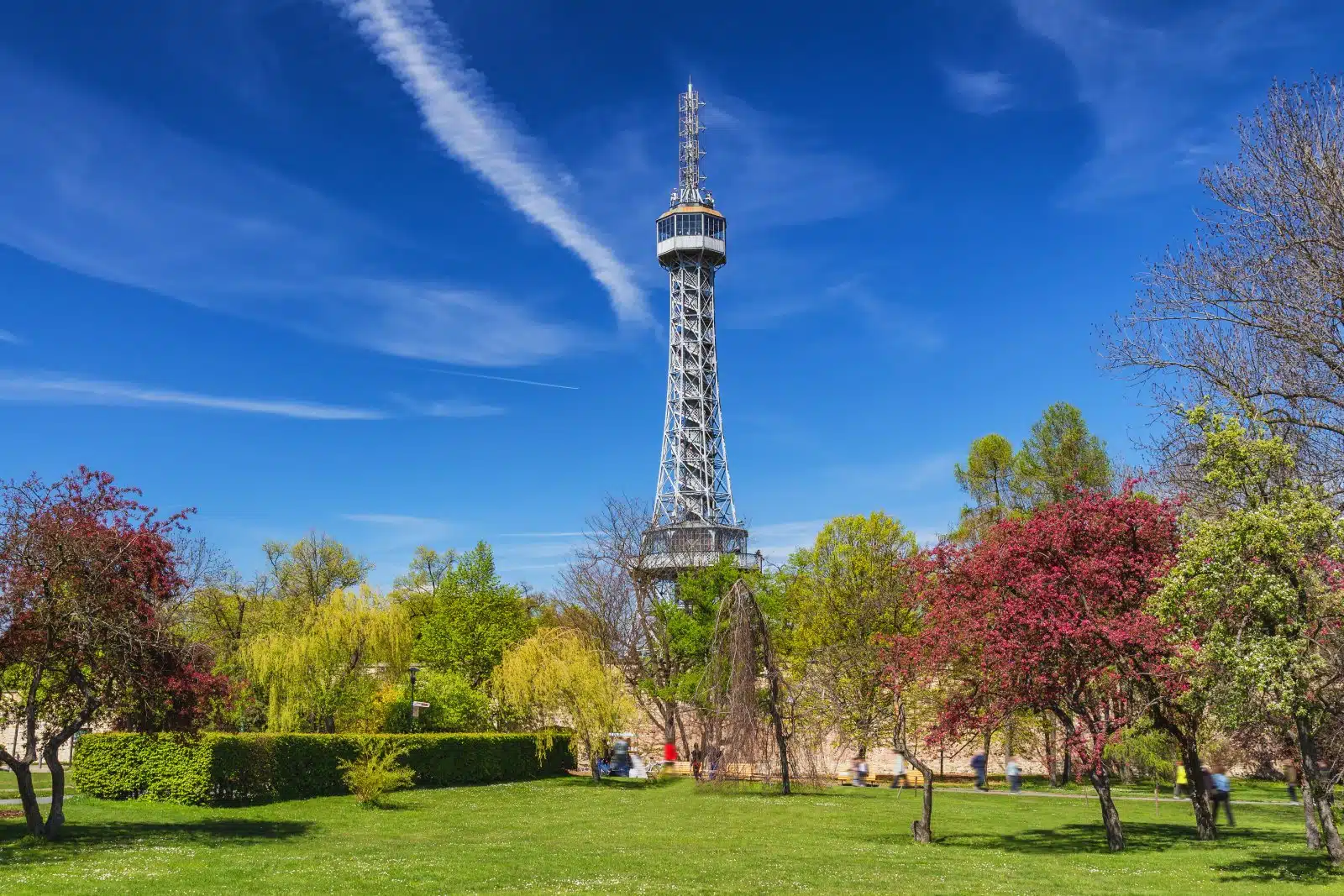
Image Credit: Shutterstock / DaLiu
Petřín Hill, with its lush gardens and meandering paths, offers a tranquil retreat from the bustling city below. The hill is crowned by the Petřín Lookout Tower, an iron structure inspired by the Eiffel Tower, providing panoramic views of Prague. A climb to the top rewards visitors with breathtaking vistas that stretch across the city’s rooftops to the countryside beyond. The hill is also home to a mirror maze, the Church of St. Michael—a wooden building transplanted from Ukraine—and the Štefánik Observatory, making it a haven for leisure and discovery. The funicular railway to the summit adds a touch of adventure to the visit, making Petřín Hill a cherished spot for both locals and tourists seeking peace and natural beauty.
Insider’s Tip: Take the funicular railway up the hill for a unique experience and to save your energy for exploring the summit. Visit during the late afternoon to catch a breathtaking sunset over the city.
6. The Dancing House
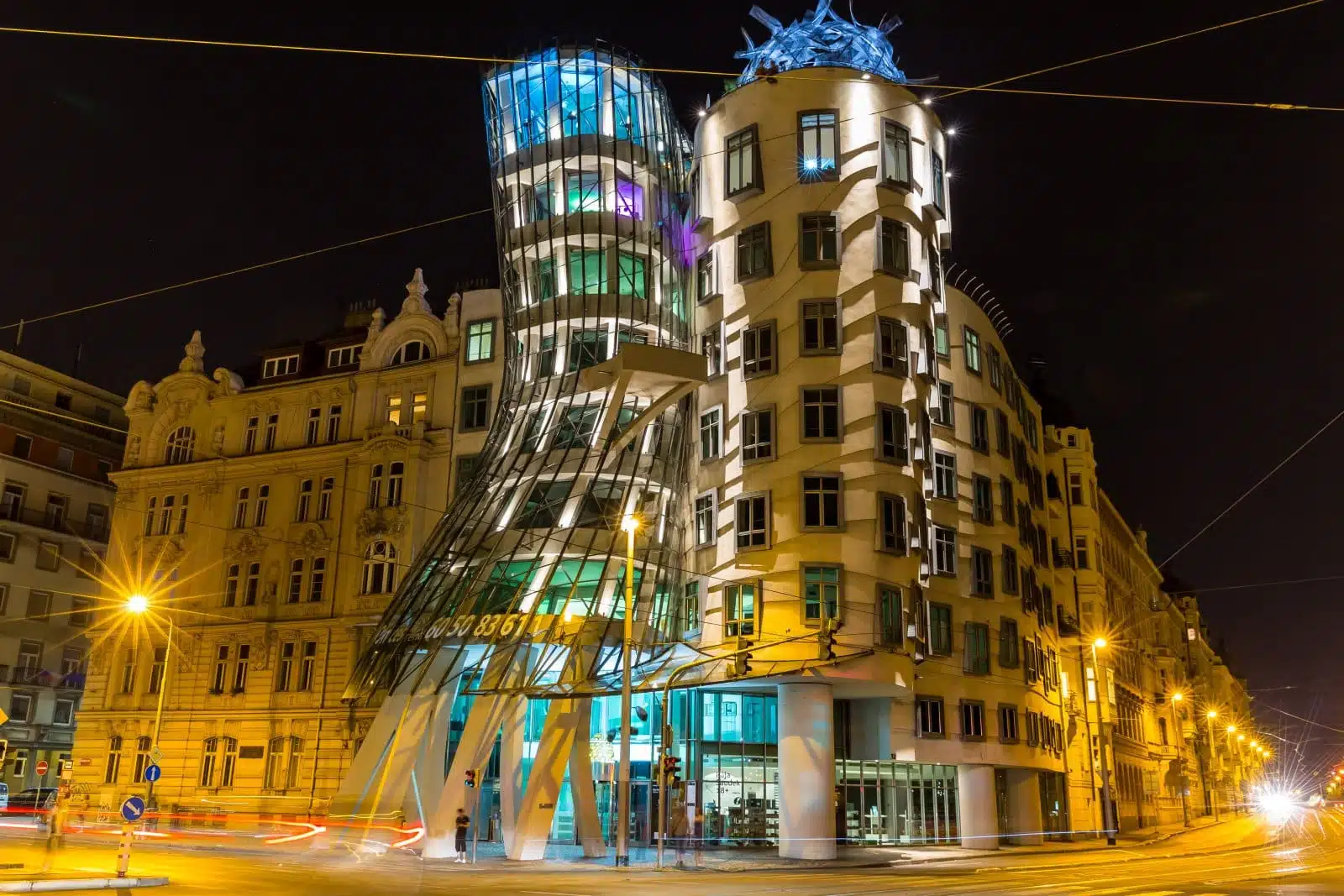
Image Credit: Shutterstock / maziarz
The Dancing House, known affectionately as Fred and Ginger, is a striking example of deconstructivist architecture that stands out against Prague’s historical backdrop. Designed by the renowned architect Frank Gehry in collaboration with Vlado Milunić, this building symbolizes the city’s dynamic post-communist era. Its curving lines and contrasting materials create the illusion of two dancers in motion. The top floor houses a restaurant offering exquisite dining experiences with panoramic views of the Vltava River and the city. The Dancing House is an architectural expression of Prague’s modern spirit and creativity.
Insider’s Tip: For the best photo opportunities, visit the Dancing House at dusk when the setting sun illuminates the building, highlighting its unique architectural features.
7. Prague Jewish Quarter (Josefov)
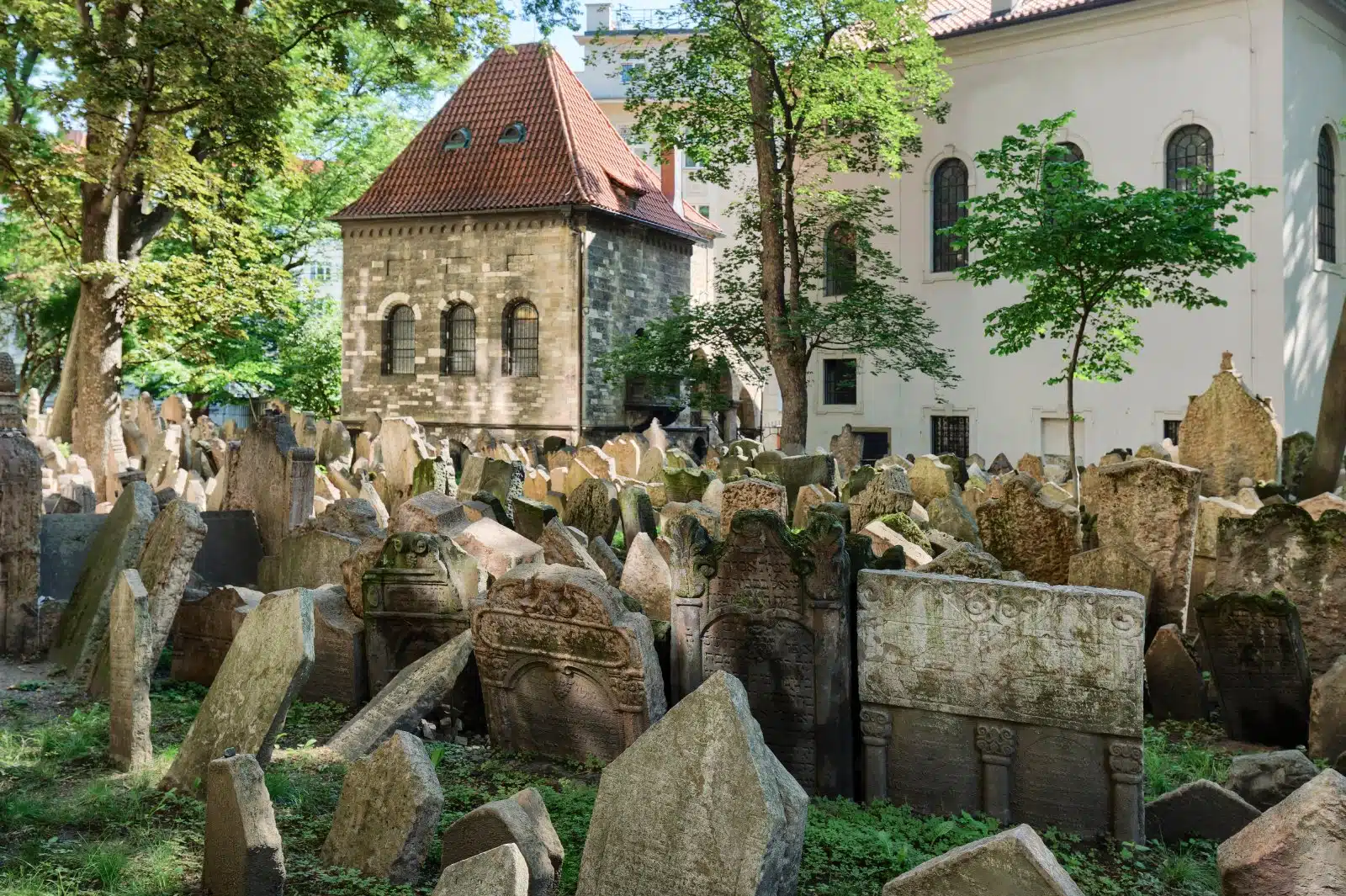
Image Credit: Shutterstock / Davesayit
Josefov, Prague’s historic Jewish Quarter, encapsulates the resilience, traditions, and contributions of the Jewish community in Prague. This compact area, once a segregated ghetto, is now a poignant reminder of the community’s turbulent history, housing significant sites such as the Old Jewish Cemetery, the Spanish Synagogue with its exquisite Moorish interior, and several other synagogues that now form part of the Jewish Museum. These sites not only serve as memorials to the victims of past persecutions but also celebrate the rich cultural heritage of Jewish life in Prague. A visit to Josefov offers a deeply moving and educational experience, providing insight into the indomitable spirit of the Jewish people and their integral role in shaping the city’s history.
Insider’s Tip: Purchase a combined ticket for entry to all the sites managed by the Jewish Museum. Allocate at least half a day to fully appreciate the history and significance of each location.
8. Vyšehrad
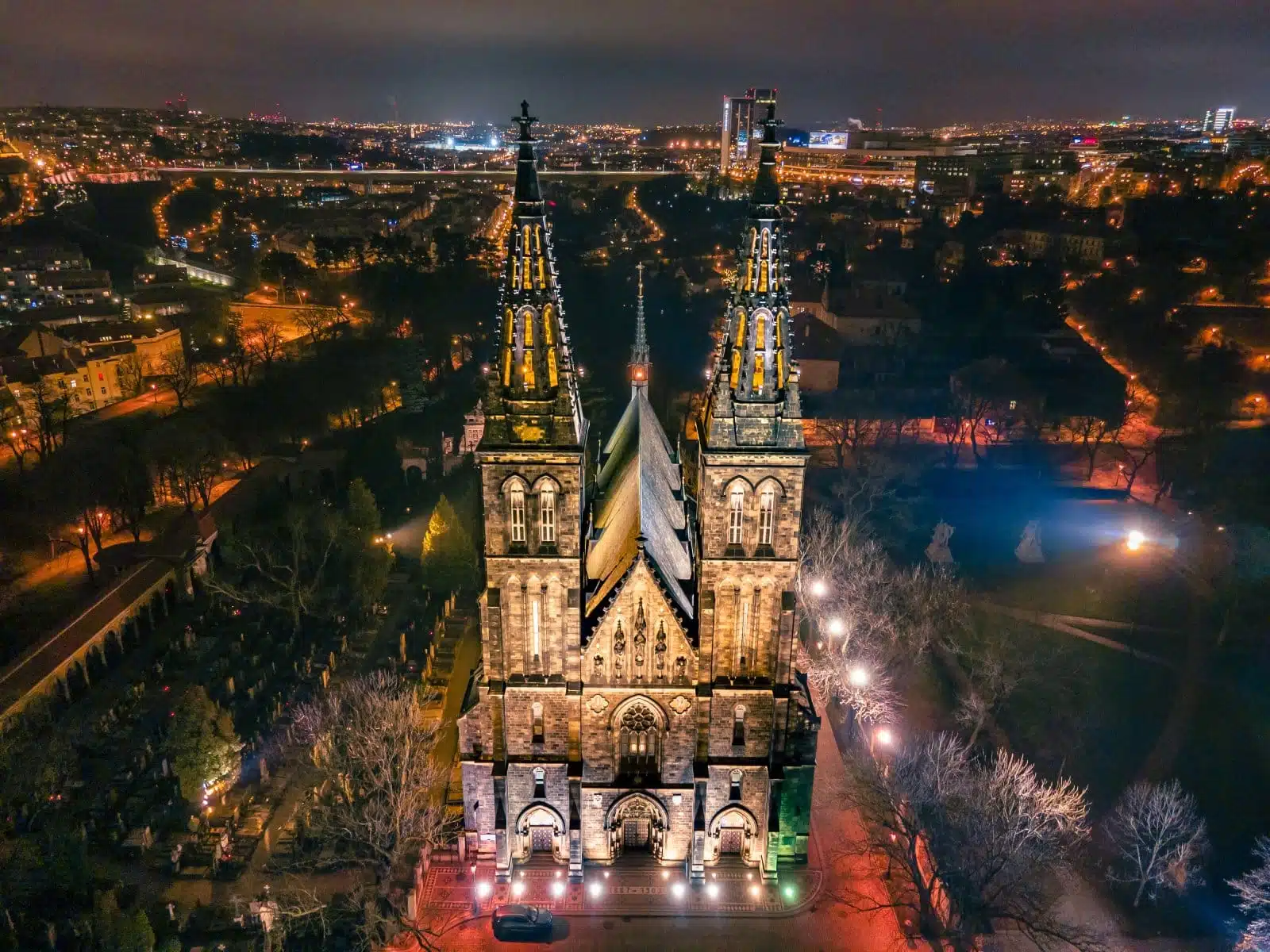
Image Credit: Shutterstock / Dmytro Pientsov
Vyšehrad, a historic fortification set on a rocky promontory above the Vltava River, offers a tranquil retreat from Prague’s more frequented sites. This lesser-known gem is steeped in legend, often associated with the earliest myths of Prague’s founding. The fort’s grounds are home to the Basilica of St. Peter and St. Paul, a neo-Gothic marvel, and the Vyšehrad Cemetery, the final resting place of many of the Czech Republic’s most distinguished artists, writers, and composers. The ancient walls and ramparts provide stunning vistas of the river and city, while the serene parks and pathways offer a peaceful haven for contemplation and leisure. Vyšehrad’s blend of myth, history, and natural beauty makes it an essential visit for those looking to explore Prague’s heritage beyond the well-trodden tourist path.
Insider’s Tip: Visit the Vyšehrad Cemetery to see the artistic tombstones and memorials of famous Czech composers, artists, and writers, including Antonín Dvořák and Alphonse Mucha.
9. The National Theatre
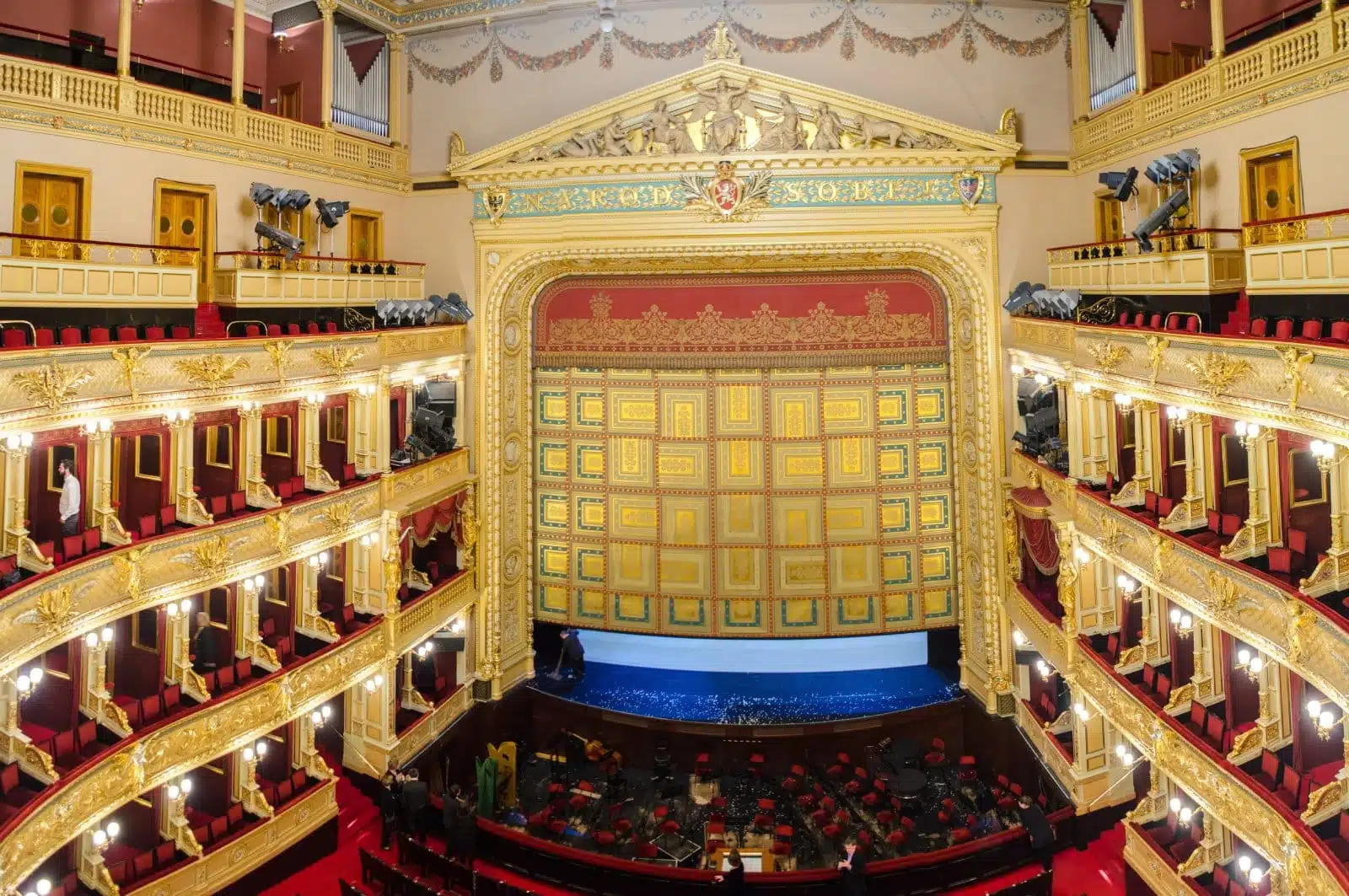
Image Credit: Shutterstock / trabantos
The National Theatre in Prague accentuates the Czech cultural heritage, embodying the nation’s artistic aspirations and struggle for national identity. Opened in the late 19th century, this architectural jewel, with its golden roof and imposing Neo-Renaissance façade, stands majestically along the banks of the Vltava River. The theatre’s history is a testament to the collective will of the Czech people, who funded its construction through public donations, symbolizing their enduring spirit and dedication to the arts. Inside, the opulent auditorium and state-of-the-art stage facilities host various performances, from traditional operas and ballets to modern theatrical productions. The National Theatre offers visitors a chance to experience world-class performances and immerse themselves in the rich tapestry of Czech history and culture.
Insider’s Tip: For a truly immersive experience, consider attending a performance. Tickets can be surprisingly affordable, and there’s no better way to appreciate the beauty of the theatre than by experiencing it as it was intended. Booking in advance is recommended, as performances often sell out quickly.
10. Kampa Island
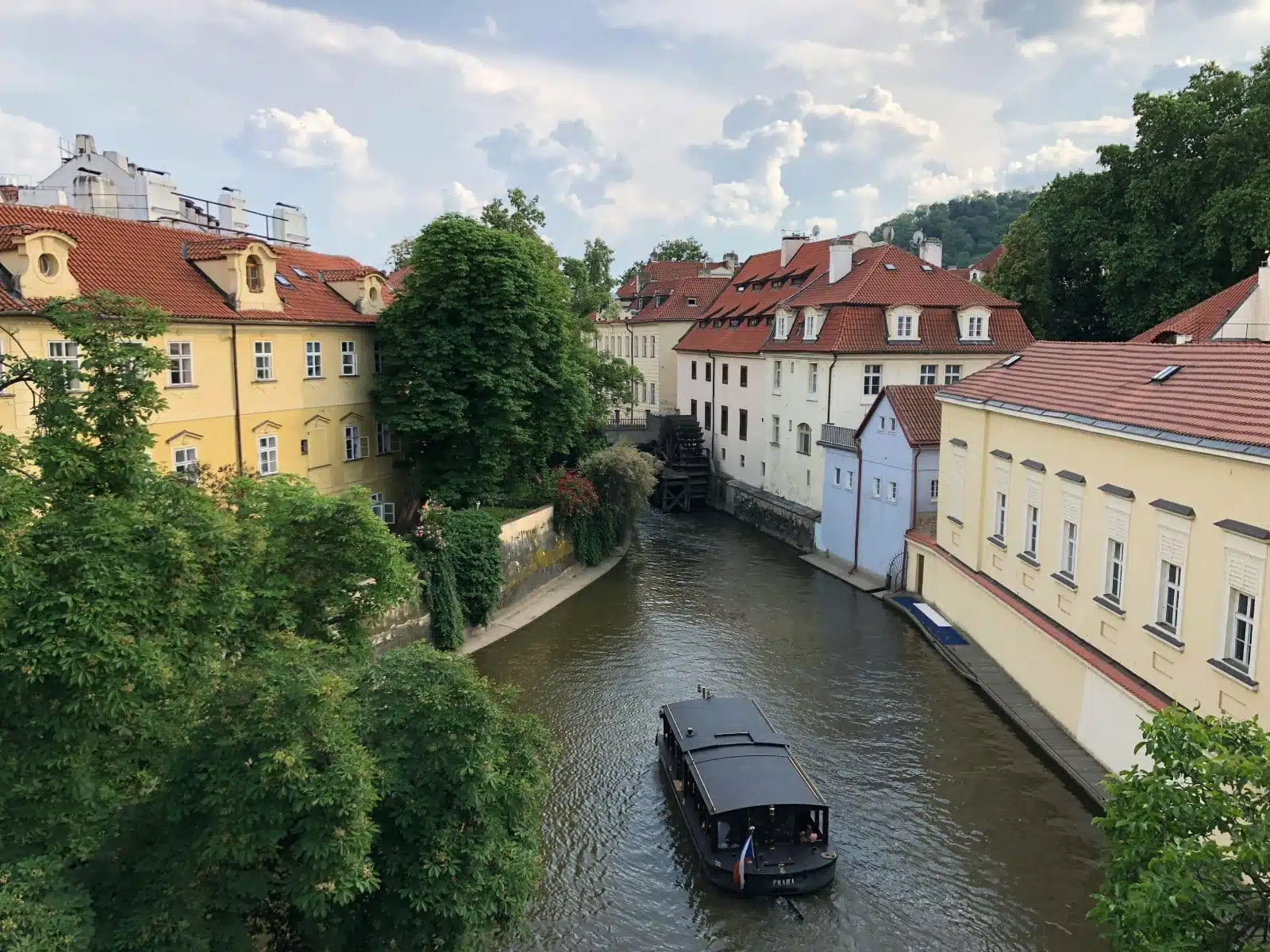
Image Credit: Pexels / Leon Huang
Kampa Island, often referred to as the “Venice of Prague,” is a tranquil haven away from the hustle and bustle of the city. This picturesque island, accessible via a short walk from the Charles Bridge, is characterized by its lush greenery, romantic waterways, and quaint architecture. The island’s park, sprawling lawns, and scenic paths provide a peaceful retreat for picnics, leisurely strolls, or simply enjoying the serene atmosphere. Kampa Island is also home to the Kampa Museum, which showcases modern Central European art, adding a cultural dimension to the island’s natural beauty. The charming water mills and the Grand Priory Mill, in particular, offer a glimpse into Prague’s historical relationship with the Vltava River, making Kampa Island a must-visit for those seeking both relaxation and a deeper understanding of the city’s heritage.
Insider’s Tip: Explore the “Venice of Prague” by taking a leisurely walk along the Certovka canal, where you can enjoy the unique views of the waterwheel and the quaint surroundings. It’s especially beautiful when the light is soft in the early morning or late afternoon.
11. The Mucha Museum
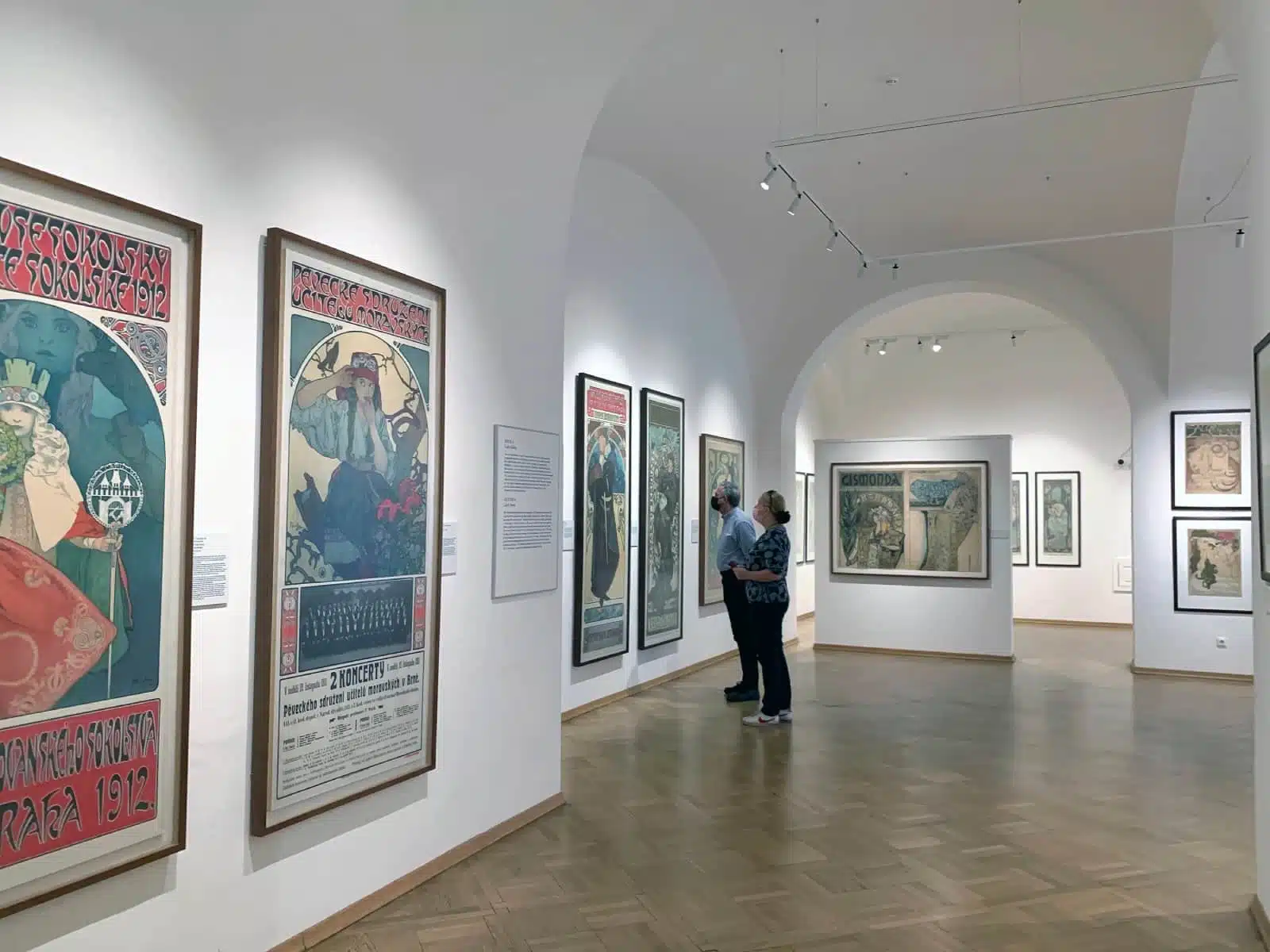
Image Credit: Shutterstock / Opachevsky Irina
Dedicated to the life and work of Alphonse Mucha, the Mucha Museum is a homage to one of the most significant artists of the Art Nouveau movement. Nestled in the heart of Prague, this intimate museum houses an impressive collection of Mucha’s works, including iconic posters, delicate paintings, and personal artifacts that offer insight into his artistic process and vision. Mucha’s art, characterized by its elegant lines, exquisite use of color, and depiction of ethereal beauty, is celebrated worldwide, and the museum provides a comprehensive overview of his contribution to visual art. Visitors to the Mucha Museum are invited to explore the evolution of Art Nouveau and its impact on art and design, making it an essential destination for art enthusiasts and admirers of Mucha’s enduring legacy.
Insider’s Tip: Don’t miss the museum shop, which offers high-quality reproductions of Mucha’s works. It’s an excellent opportunity to take home a piece of Art Nouveau elegance. Visiting during off-peak hours, such as early morning, can provide a more personal experience with the artwork.
12. Letná Park

Image Credit: Shutterstock / Petr Pavlica
Perched above the Vltava River, Letná Park offers breathtaking panoramic views of Prague, making it a favorite spot for photographers and nature lovers. This expansive park, known for its wide-open spaces, mature trees, and leisurely walking paths, is ideal for outdoor activities, from picnics to skateboarding. The park’s beer garden is a popular gathering place where visitors can enjoy local brews while enjoying the stunning cityscape below. Letná Park is also a site of historical significance, marked by the Metronome, which stands as a symbol of the changing times and the Czech people’s resilience. Whether you’re seeking a quiet spot to reflect, a scenic location for a leisurely walk, or a lively place to socialize, Letná Park embodies the vibrant spirit of Prague.
Insider’s Tip: Visit the beer garden located within the park for a relaxed afternoon enjoying local beers and snacks against the backdrop of Prague’s panoramic views. It’s a perfect spot to mingle with locals and enjoy the city’s vibrant atmosphere.
When to Travel

Image Credit: Pexels / Jess Bailey Designs
The optimal time to visit Prague is during the spring (April to June) and fall (September to October) seasons. These periods offer mild weather, making exploring the city’s outdoor attractions and historic sites comfortable. Spring brings blooming gardens and parks, while fall features vibrant autumnal colors, enhancing the city’s picturesque landscapes. Additionally, these shoulder seasons typically experience fewer tourists than the peak summer months, allowing for a more relaxed exploration of Prague’s cultural and historical offerings.
Summer (July and August) is the peak tourist season, characterized by warmer temperatures and a lively atmosphere, with numerous festivals and events. However, visitors should be prepared for larger crowds at major tourist sites and higher accommodation prices during this time.
Winter (November to February) offers its own charm with festive Christmas markets and a potential dusting of snow, creating a magical atmosphere. While temperatures can be cold, indoor attractions like museums, galleries, and cafes provide cozy refuges to experience the city’s culture and cuisine.
How to Get There

Image Credit: Shutterstock / New Africa
By Air: The primary gateway to Prague is the Václav Havel Airport Prague (PRG), located about 20 kilometers west of the city center. The airport serves a wide range of international and domestic flights, connecting Prague with major cities across Europe and beyond. To reach the city center from the airport, travelers can use public transportation (bus and metro), airport express services, taxis, or private transfers. The journey time to the city center is approximately 30 minutes to an hour, depending on the mode of transport and traffic conditions.
By Train: Prague is well-connected by rail to many European cities, making train travel a convenient option for visitors from neighboring countries. The main railway station, Praha Hlavní Nádraží, is centrally located and offers services including international routes to cities like Berlin, Vienna, Budapest, and Warsaw. The station provides easy access to Prague’s public transportation network for onward travel within the city.
By Bus: International and domestic bus services also connect Prague with various destinations. The central bus station, Florenc, is near the city center and is the main hub for long-distance bus travel. Buses offer an economical alternative to trains and planes, with several operators providing frequent services to and from Prague.
By Car: For those preferring to drive, Prague is accessible via an extensive network of highways and roads. However, visitors should be aware of parking regulations and restrictions in the city center. Many areas are pedestrianized or have limited parking, so it’s advisable to use designated parking facilities and rely on public transport or walking to explore the city’s core.
Regardless of how you travel to Prague, the city’s efficient public transportation system, including trams, buses, and the metro, makes it easy to navigate and discover all this enchanting capital offers.
The Bottom Line
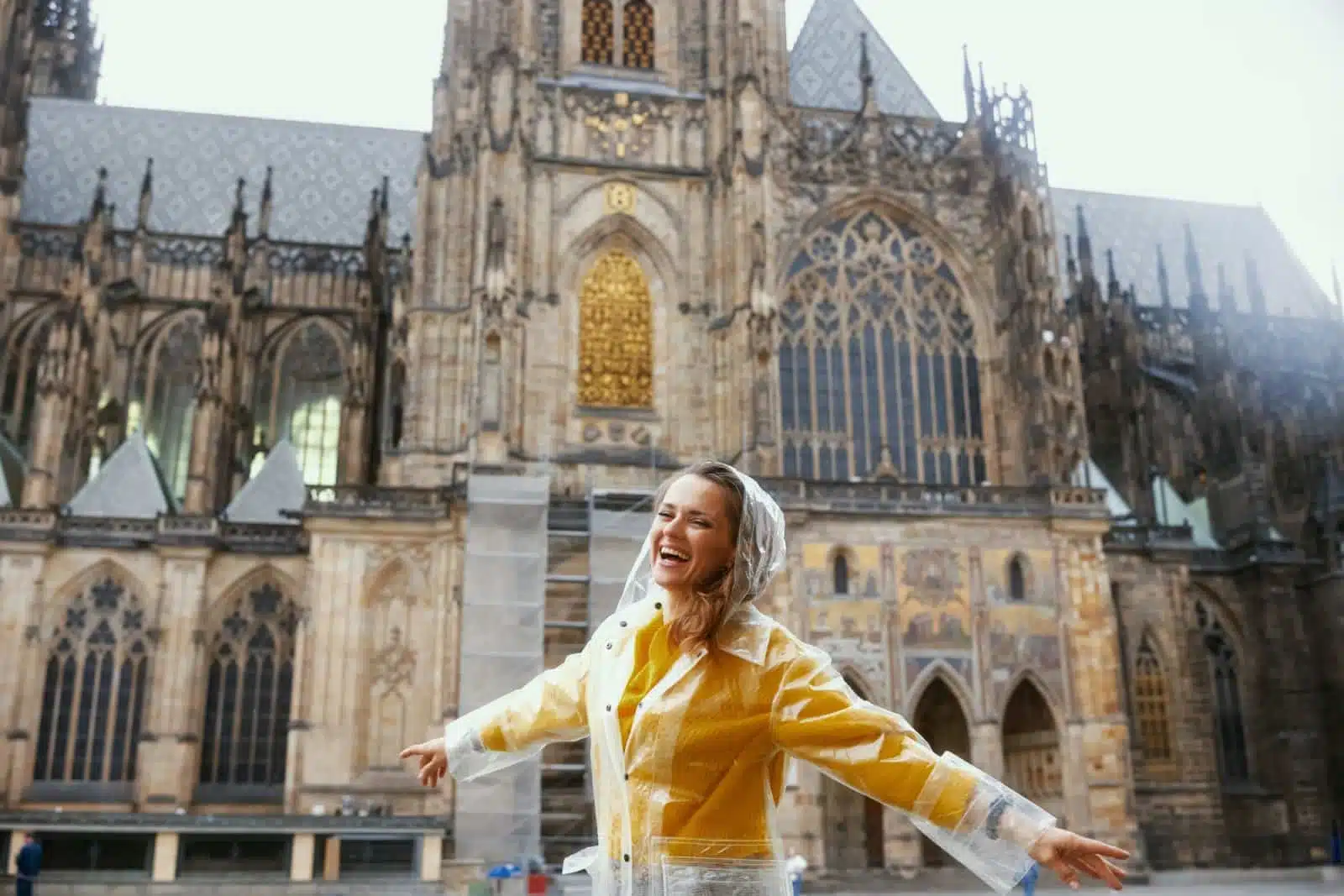
Image Credit: Shutterstock / Alliance Images
With its rich tapestry of history, art, and culture, Prague offers endless opportunities for exploration and discovery. From the grandeur of its castles and cathedrals to the intimate charm of its narrow streets and hidden gardens, the city invites visitors to step into a living fairy tale. Each corner of Prague tells a story, each landmark holds a secret, and every visit reveals something new. As you wander through this enchanting city, let yourself be captivated by its beauty, moved by its history, and inspired by its enduring spirit.
More From The Green Voyage
12 Best Practices for Sustainable Travel in 2024 – How to Travel With Minimal Environmental Impact
Unlocking Hotel Perks – A Traveler’s Guide to Maximizing Hotel Reward Programs for Optimal Benefits
Travel Hacks for Frequent Flyers – 6 Tips and Tricks to Make the Best of Air Travel
The post A City Guide to Prague, Czech Republic first appeared on The Green Voyage.
Featured Image Credit: Shutterstock / Alliance Images.
For transparency, this content was partly developed with AI assistance and carefully curated by an experienced editor to be informative and ensure accuracy.
Tips for Trip Success
Book Your Flight
Find an inexpensive flight by using Kayak, a favorite of ours because it regularly returns less expensive flight options from a variety of airlines.
Book Your Hotel or Special Accommodation
We are big fans of Booking.com. We like their review system and photos. If we want to see more reviews and additional booking options, we go to Expedia.
You Need Travel Insurance!
Good travel insurance means having total peace of mind. Travel insurance protects you when your medical insurance often will not and better than what you get from your credit card. It will provide comprehensive coverage should you need medical treatment or return to the United States, compensation for trip interruption, baggage loss, and other situations.Find the Perfect Insurance Plan for Your Trip
